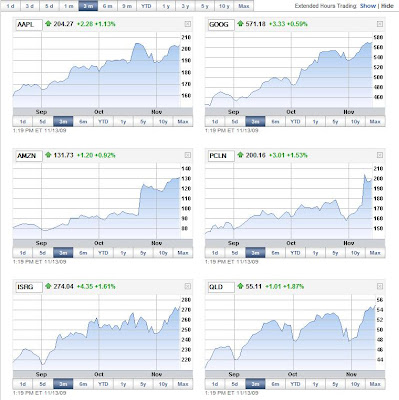Tickerville's Quint Tatro (whom I took a webinar on TA from, and whom I've been using as one of my contra-indicators since April this year - sorry Quint) continues to be bearish.
He starts this Tape Talk, talking about how Friday's 3.5 hour market had a significant volume distribution, without even mentioning Dubai.
Tape Talk (11/29/09)
I'm wondering if this should be the last time that I even link to his analysis... (If you are his fan, make sure you bookmark his site.)
Without macro (financial, economic, political, even social) understanding (or at least an attempt), the investment/trading becomes reactive to the events (like Dubai) as they unfold, and technical analysis becomes justification after the fact.
Now the guys at Breakpointtrades.com, from which I receive free TA newsletters sent out Early Friday alert after Dubai debt crisis caused the U.S. stock market futures into deep red like it were September 2008 all over again. The alert arrived in my Inbox at 3:01AM PST on Friday, with 43 charts no less, so that we would be prepared mentally for a potential big gap down. They are also technical traders, but they seem to put TA in bigger context.
Early Friday Morning Market Newsletter Special Edition (11/27/09 Breakpointtrades.com)
I trimmed my holdings somewhat on Friday, but more of a housekeeping and not a panic selling. It was a gap down alright, but the indices went nowhere near what I was prepared for (at least not yet, it could still happen), and a peek into the Breakpointtrades.com guys' charts helped calm the nerve. (Disclosure: I'm not paid to recommend their site or their service.)
Tying Loose Ends at 2014 End: #Fukushima I NPP R4 SFP Emptied, STAP Was
Outright Fraud, Potential Radioactive Leak in Ukraine
-
All fuel assemblies - 1331 used and 202 new - in the Spent Fuel Pool of
Reactor 4 at Fukushima I Nuclear Power Plant have been moved out of the
pool. Most...
11 years ago












